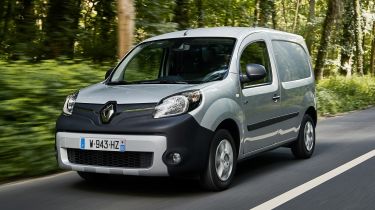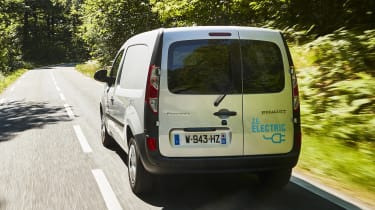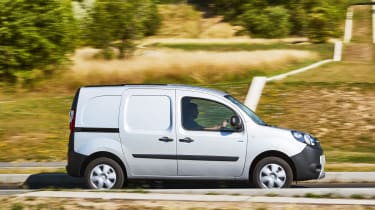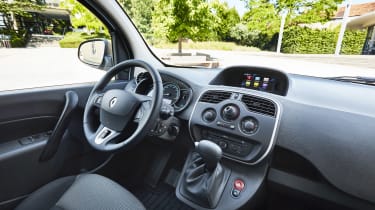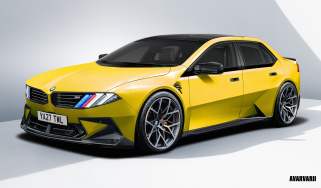New Renault Kangoo Z.E. 2017 review
The all-electric Renault Kangoo Z.E. van has been updated with the range rising up to 170 miles, but how does it drive?

Range has always been a concern in electric vans, but by raising the game to 170 miles Renault has gone some way to alleviating fears with the updated Kangoo Z.E.. Yes, there is still a fair way to go to tempt many buyers to switch from conventionally powered vans, but the Kangoo Z.E. should meet all your needs if you have a place to charge it overnight and a relatively short daily distance to cover. Add in the fact that it’s pleasant enough to drive and performs admirably in the city, and the Kangoo Z.E. has its rivals beaten in almost every way.
The Renault Kangoo Z.E. is the most successful small electric van in Europe, selling over 25,000 units since its launch in October 2011. Fully-electric LCVs have never really caught on in this country, however, due mainly to their limited range. Renault is hoping to address this issue with the launch of an updated version of the electric Kangoo, which now offers a class-leading 170 miles of driving on a single charge.
The new model, dubbed the Kangoo Z.E. 33 due to its new 33kWh battery, has achieved this increased range due to an upgraded energy density system, which has resulted in optimised battery performance without the need to add extra modules. Basically, it now has a bigger storage capacity without any changes to its overall bulk.
More reviews
Car group tests
In-depth reviews
Long-term tests
Road tests
• Can an electric van fit your business?
There’s also the addition of a new heat pump in the climate control system that helps maintain the driving range even in cold weather by restricting the use of electrical resistors that consume power.
Charging of the new Kangoo Z.E. has been made faster and easier thanks to a new charger that is twice as powerful as the one it replaces. A full charge now takes just six hours when plugged into a 32A socket, that’s one hour quicker than its predecessor despite the increased range. It can also now be topped up with 22 miles of range in just one hour.
The van has a payload of 640kg and comes in three bodystyles; standard, Maxi and Maxi Crew. The standard version is 4.28 metres in length and boasts a carrying capacity of 3.0 cubic metres, while the Maxi is 4.66 metres and can carry 4.6 cubic metres. The Maxi Crew is the five-seat version of the Maxi and, as a result, has a reduced load volume of 3.4 cubic metres.
Although official prices are yet to be announced, Renault has admitted the cost of buying a new Kangoo Z.E. will rise a little. Buying outright is expected to cost from around £17,800 (excluding VAT), while there will also be the option to buy the van for around £14,200 and then lease the batteries at £50 per month. This latter version eliminates any concerns about the batteries losing their longevity, with Renault claiming this currently accounts for 90 per cent of sales.
Air-conditioning will come as standard in most countries but sadly that’s not going to be the case in the UK, with the aforementioned heat pump set to be a costly £965 extra.
The total purchase price will still be roughly on par with the Nissan e-NV200, and significantly cheaper than the Citroen Berlingo Electric, which currently starts at £21,300.
On the road, the new Renault Kangoo Z.E. is the ideal van for city driving. Turn the key in the ignition and it’s hard to notice the 44kW electric motor come to life. It’s then simply a case of sliding the automatic gearbox into drive, releasing the handbrake and off you go.
Acceleration is a little disappointing for an electric vehicle, with that initial burst of torque missing. It certainly feels slower off the line than the Citroen Berlingo Electric and it feels especially sluggish on any sort of incline. Our test vehicle did come loaded with 250kg in the back, but you’d expect most Kangoo Z.E. drivers to be carrying a similar weight when going about their daily business.
However, it’s unlikely many potential buyers will be basing their decision on performance alone, and it’s the only real downside of what is an otherwise pleasant experience from behind the wheel.
Driving around town is effortless, with the engaging steering helping navigate around tight bends with ease and the cushioned ride soaking up bumps and potholes without too much drama. The lack of any engine noise, bar the gentle hum of the electric motor, can accentuate any rattles and creaks from around the cabin, but on the whole city driving is a relaxing experience.
The range is the main selling point here though. Renault quotes 170 miles on the NEDC cycle, over 50 per cent more than the 106 miles offered in the Nissan e-NV200 and Citroen Berlingo Electric. Real world driving reduces the range to around 124 miles, but it’s still significantly more than any of its rivals can manage.
Inside, the Kangoo Z.E. feels more modern than its competitors. The plastic is scratchy, but it feels well put together and is generally a nice environment to be in. The inclusion of a TomTom based sat-nav is a bonus, although it does feel a little dated compared to systems found in modern cars. Curiously, it’s also set deep into the dash, meaning the driver has to stretch forward to use the touchscreen.

